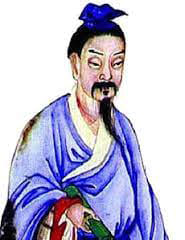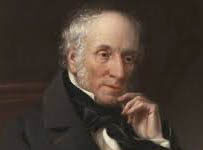Explore the life and legacy of Ban Gu, a renowned historian and poet of the Eastern Han dynasty. Best known for his monumental work ‘Han Shu’ (Book of Han), Ban Gu’s contributions to Chinese historiography and literature have shaped historical writing for centuries.
Ban Gu
Ban Gu was a Chinese historian and poet who lived during the Eastern Han dynasty. He was born in 32 CE in present-day Xuzhou, Jiangsu province and died in 92 CE. He was the younger brother of Ban Biao, who was also a historian, and the father of Ban Zhao, who was the first known female Chinese historian. Ban Gu was best known for his book “Han Shu” (also known as “Book of Han”), which is one of the official Chinese historical texts that covers the history of the Western Han dynasty from its founding to the end of the Wang Mang Interregnum.
Ban Gu grew up during a time of political and social upheaval in China, which was characterized by wars, revolts, and a weak central government. Despite these challenges, he was able to pursue his studies and became a scholar and a writer. He was well-versed in the Confucian classics, as well as history, literature, and music. He was also an accomplished poet and was known for his wit and intelligence.
In his early career, Ban Gu served as a government official in several different regions of China. He was appointed as a court official in the capital city of Luoyang and was involved in various projects, including the compilation of the imperial annals and the establishment of the imperial library. During this time, he also wrote several historical and literary works, including poems, essays, and biographies of notable figures.
Ban Gu’s most famous work, “Han Shu,” is a comprehensive history of the Western Han dynasty that covers a period of about 200 years. The book was written in annalistic style and is divided into 60 chapters that cover various aspects of the dynasty’s history, including the reigns of individual emperors, the administration of the government, military affairs, and cultural developments. Ban Gu relied on a wide range of sources, including official documents, local gazetteers, personal accounts, and oral traditions, to compile his work.
One of the unique features of “Han Shu” is its detailed descriptions of various regions and peoples within the Western Han empire. Ban Gu wrote about the geography, customs, and beliefs of different ethnic groups, and provided insights into the relationships between the Han empire and its neighbors. He also wrote about the economic and social conditions of the time, including the trade routes and the distribution of wealth.
Ban Gu’s “Han Shu” was highly regarded by later generations of historians and became an important source of information for the study of ancient Chinese history. It was widely read and cited in the centuries following its publication and remains an important historical text to this day.
In conclusion, Ban Gu was a versatile and accomplished scholar who made significant contributions to the fields of history and literature. He was known for his intelligence, wit, and dedication to his craft, and his book “Han Shu” remains a lasting testament to his legacy. 0 0 0.
Ban Gu: Comprehensive Biography
Ban Gu (32 CE – 92 CE) was a renowned Chinese historian, poet, and scholar during the Eastern Han dynasty. He was born in 32 CE in present-day Xuzhou, Jiangsu Province, into a family with a deep intellectual tradition. Ban Gu is best known for his monumental work, the ‘Han Shu’ or ‘Book of Han’, which chronicles the history of the Western Han dynasty. His contributions to Chinese historiography have cemented his place as one of China’s most important historians.
Early Life and Family Legacy
Ban Gu was born into an eminent scholarly family. His father, ‘Ban Biao’, was a respected historian who began work on a history of the Western Han dynasty but was unable to complete it before his death. Ban Gu’s older brother, ‘Ban Chao’, was a famous military general who expanded Chinese influence into Central Asia, while his younger sister, ‘Ban Zhao’, became the first known female historian in Chinese history. Ban Gu’s family was not only influential in intellectual circles but also played significant roles in politics and military affairs.
Ban Gu’s education was steeped in the Confucian classics, which heavily influenced his worldview and approach to historiography. His father’s unfinished work inspired Ban Gu to continue the task of documenting the history of the Western Han, a project that would become the foundation of his legacy.
The ‘Han Shu’ and Historiographical Contributions
Ban Gu’s most famous work, the ‘Han Shu’ (漢書), is one of the most important historical texts in Chinese history. Also referred to as the ‘Book of Han’, it is a comprehensive history of the Western Han dynasty, covering the period from 206 BCE to 23 CE, including the rule of Emperor Gaozu (the dynasty’s founder) to the usurpation of the throne by ‘Wang Mang’ during the brief Xin dynasty (9–23 CE).
The ‘Han Shu’ is one of the ‘Twenty-Four Histories’, a collection of authoritative Chinese historical texts. It is considered a model of historical writing and organization, setting a standard for future historians. The text is divided into several sections, including annals, treatises, biographies, and tables, a structure that was later followed by other historians, including ‘Sima Qian’, who wrote the earlier ‘Records of the Grand Historian’ (Shiji). Ban Gu’s approach was highly methodical and thorough, combining narrative history with analysis and emphasizing the moral lessons that could be drawn from the past.
The ‘Han Shu’ is distinguished from the earlier ‘Shiji’ in that Ban Gu focused exclusively on the Western Han, offering a more detailed account of its institutions, culture, and key figures. He supplemented his father’s work with extensive research, and the text is known for its objectivity and balance. Ban Gu’s attention to detail and his ability to weave moral and political insights into his historical accounts make the ‘Han Shu’ a crucial source of information on the Han dynasty.
Literary Achievements
In addition to his work as a historian, Ban Gu was a talented poet and essayist. He was one of the early figures in the development of Chinese fu (賦) poetry, a genre of descriptive prose interspersed with verse. His most famous poem, ‘Fu on the Two Capitals’ (兩都賦), contrasts the splendor and decline of the Han dynasty’s capitals: Chang’an, the earlier capital, and Luoyang, the later capital. Through his poetry, Ban Gu expressed his reflections on politics, history, and the moral state of the empire.
‘Fu on the Two Capitals’ is significant not only for its literary value but also for the way it provides insight into the cultural and political climate of the time. The poem describes the grandeur of the cities while subtly critiquing the excesses and moral decay of the ruling class. Ban Gu’s mastery of both historiography and poetry allowed him to communicate his ideas about governance and ethics through multiple forms of expression.
Political Career and Downfall
Ban Gu’s career extended beyond writing and scholarship. He held official positions within the Eastern Han government and served as a key member of the court. His scholarly achievements earned him favor with the imperial family, and he became a trusted advisor to the emperor.
However, Ban Gu’s political career was not without challenges. His association with ‘Dou Xian’, a powerful general who gained influence at the court, eventually led to his downfall. When Dou Xian fell from grace, Ban Gu was implicated in his alleged offenses, leading to Ban Gu’s arrest. He died in prison in 92 CE under uncertain circumstances, though some historians speculate that his death was politically motivated.
Ban Gu’s Family and Legacy
Ban Gu’s influence extended beyond his own lifetime, largely due to his family’s continued involvement in historical scholarship. His sister, ‘Ban Zhao’, completed the ‘Han Shu’ after his death, ensuring that her brother’s work would be preserved and remembered. Ban Zhao also became a significant scholar in her own right, contributing to Chinese history and education through her work, including her teachings on Confucian ethics for women.
His ‘Han Shu’ remains a cornerstone of Chinese historiography, providing modern historians with invaluable insights into the Western Han dynasty. His methodical approach to history, his literary style, and his moral philosophy have left a lasting imprint on Chinese intellectual history. Moreover, his fusion of historical narrative with Confucian moralism set a precedent for how history would be written and interpreted in China for centuries.
Conclusion
He was more than just a historian; he was a scholar, poet, and philosopher who played a pivotal role in shaping Chinese historiography. His life’s work, the ‘Han Shu’, is one of the most authoritative sources of information on the Western Han dynasty, and his contributions to Chinese literature and history have earned him a permanent place among China’s most esteemed intellectuals. Despite his untimely death, Ban Gu’s legacy lived on through the work of his sister, Ban Zhao, and through the historical significance of the ‘Han Shu’. 0 0 0.
Brief Data on Ban Gu:
- Full Name: Ban Gu (班固)
- Born: 32 CE, Xuzhou, Jiangsu Province, China
- Died: 92 CE
- Era: Eastern Han dynasty
- Occupation: Historian, Poet, Government Official
- Key Contributions: Author of the ‘Han Shu’ (Book of Han), one of the ‘Twenty-Four Histories’ of China, covering the Western Han dynasty.
- Famous Works: ‘Han Shu’ (Book of Han), ‘Fu on the Two Capitals’ (兩都賦)
- Family: Son of Ban Biao, brother of Ban Chao, and father of Ban Zhao (first known female historian).
FAQs About Ban Gu
Q1: What is Ban Gu best known for?
A1: He is best known for his historical work, the ‘Han Shu’ (Book of Han), which documents the history of the Western Han dynasty. It remains one of the most important historical texts in Chinese historiography.
Q2: How is Ban Gu’s ‘Han Shu’ different from the ‘Records of the Grand Historian’ (Shiji)?
A2: While ‘Records of the Grand Historian’ (Shiji) by ‘Sima Qian’ covers a broader scope of Chinese history, his ‘Han Shu’ focuses exclusively on the Western Han dynasty, offering a more detailed account of this period.
Q3: What role did Ban Gu’s family play in his work?
A3: Ban Gu’s father, ‘Ban Biao’, began the historical project that Ban Gu completed. After Ban Gu’s death, his sister, ‘Ban Zhao’, also a historian, completed the ‘Han Shu’. His brother, ‘Ban Chao’, was a notable military general.
Q4: What are Ban Gu’s contributions to Chinese poetry?
A4: He was also a poet, known for his ‘Fu on the Two Capitals’, a poem that contrasts the grandeur of the Han dynasty capitals and offers political and moral reflections on the state of the empire.
Q5: Why was Ban Gu imprisoned?
A5: He was implicated in the downfall of General ‘Dou Xian’, a powerful figure at court. After Dou Xian’s fall, Ban Gu was arrested and died in prison in 92 CE under mysterious circumstances.
N. B. This article originally belongs to the book, ‘Brief Biographies of Ancient Thinkers and Writers‘ by Menonim Menonimus.
Books of Biography by M. Menonimus:
- The World Writers-Brief Biographies
- Introduction to World Writers
- Introduction to World Personalities
- Love of Reputed Persons ..
Additional Searches:










